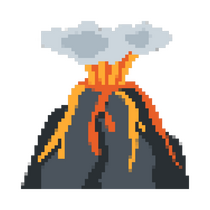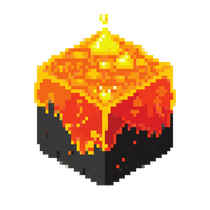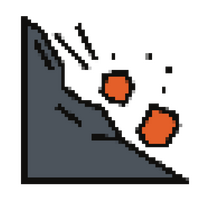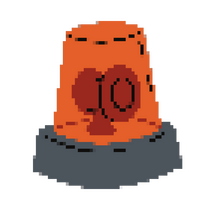Eruption of Mt. Taal
This website contains information on the eruption of the Taal volcano.
Nature of Disaster
Disaster Mitigation
Vulnerablity & Exposure
Quiz!
Find Reference
Mitigation techniques done prior to Eruption
| NATIONAL VOLCANO MONITORING AND WARNING | PHIVOLCS’ core program for monitoring the country’s most active volcanoes, and giving high-quality observation data to give volcano information, warning, and eruption prediction services. Focused on establishing patterns of volcanic unrest with 24/7 real-time monitoring and manned operations of Volcano Observatories |
| VOLCANO HAZARD ASSESSMENT AND RESEARCH AND DEVELOPMENT (VHARD) | Volcano Hazards Assessment and Research and Development Program (VHARD) includes the development and/or adaption of technologies in field mapping, satellite imagery processing, among others. The generation of hazard maps and assessment, identification of potential risk exposure, for development of disaster management and civil protection. |
| VOLCANO, EARTHQUAKE AND TSUNAMI DISASTER PREPAREDNESS AND RISK REDUCTION | Develops communication strategies geared towards efficient and effective information delivery and capacity enhancement of various people utilizes information, education, and communication. It campaigns to ensure efficiency. |
Mitigation techniques done during Eruption
| RELOCATION/EVACUATION | Precautionary evacuations of at-risk communities took place in 16 municipalities in Batangas and Cavite provinces. Philippine Red Cross (PRC) mobilized a Rapid Damage Assessment and Needs Analysis (RDANA) team to support evacuations and conduct assessments in the affected areas. 535 evacuation centers for 396,731 people (or 104,645 families) were affected by the Taal Volcanic eruptions in the provinces of CALABARZON. ECs were located in public buildings (schools, covered basket courts, and public sports centers) established in the Batangas and Cavite provinces |
| ADVISORIES | The National Disaster Risk Management and Reduction Committee (NDRRMC) issued advisory bulletins by SMS. Philippine Red Cross Communications team posted updates on Facebook and Twitter. Areas around Taal Volcano were advised to guard against the effects of heavy and prolonged ashfall. The Manila International Airport Authority announced that all flights are on hold at Ninoy Aquino International Airport (NAIA) (arrivals and departures because of ashfall) A total of 242 flights were canceled (on 13 January 2020). Municipal authorities announced the closure of schools on 13 January 2020 and aimed to open them by February 2020. DepEd issued memorandums to accept student-transferees from areas affected by the eruption even without the necessary documents. Local government authorities (LGA) and DOH issued precautionary measures to take due to the potential respiratory problems created by ashfall. Protective face covering, face masks, and wet towels. They also advised to carefully get rid of the ashfall on roofs to avoid rusting or collapsing. |
| RESPONSE ACTIVITIES | Red Cross Action Teams, Red Cross Youth, Red Cross community-based volunteers (Red Cross 143) were mobilized. PRC established welfare desks at the ECs, which provided first aid, restoring family links (RFL), and other services. There was a “safe and well” registry for people who want to report themselves safe for people who might be looking for them. Tracing requests were mobilized, calls were mobilized. PRC has also mobilized ‘hot meals on wheels’ vans. |
| DISPLACEMENT | NDRRMC and PDRRMCs established a Task Force to find solutions for evacuees who cannot return. To support families, authorities and partnered organizations established alternative or transitional sites for families. They also provided transportation to these locations. A number of those displaced will not be able to return at all, as their homes are now in areas categorized as Permanent Danger Zones. |
| LIVELIHOOD AND BASIC NEEDS | According to the DOH situation report, evacuees in the ECs were provided sufficient meals with three meals a day. There have been public/private donations of food items for the affected families. Personnel also distributed essential household items in Batangas province. Each family also received two blankets and sleeping mats. Ready-to-eat hot meals have been provided to families (DREF, PRC PLUS DONATIONS) Many companies such as the Ayala Group and Megaworld and countries such as the US and SoKor donated and offered aid to communities affected by the Taal Volcano Eruption. A cash grant of 3500 was also given to each family during early/mid-Feb 2020 by a financial service provider (FSP). The amount was based on an initial month to help them address basic needs. Prioritization was given to affected and most vulnerable families from areas in lockdown and within a 7km radius of the main crater. |
| WATER, SANITATION, AND HYGIENE | The families were provided with enough kits needed especially with regards to personal hygiene kits like toothbrushes, sanitary napkins, soaps, and underwear. Families were provided safer water by the RDANA and families received jerry cans. Sanitation facilities (portable toilets and handwashing facilities) were increased. |
| PROTECTION, GENDER AND INCLUSION (PGI) | For separated families, mapping of child protection services and family tracing was asked to be mobilized and implemented through welfare desks. Children in ECs were provided with child-friendly space activities like “Our Space Together” or “My Feelings”. The signing of the Code of Conduct and Child Protection policy for all staff and volunteers. |
| HEALTH | The Philippine Emergency Medical Assistance Team (PEMAT), LED BY DOH with support from WHO, responded as well. The local government also provided medical stocks. There was the deployment of ambulances, emergency health units, and health personnel. Along with the pandemic, the health of the evacuees was prioritized. Given out were protective equipment such as eye goggles and dust masks, water, to the Batangas province. To ensure outbreaks are monitored (mosquito-borne diseases eye irritation, skin diseases), cases were referred to health service providers for onward support, as well as health education and awareness provided in the ECs. People also received community-based disease prevention health promotion as well as community-based epidemic prevention and control activities. Children, the elderly, and pregnant women were the primary target. Additionally, the psychological well-being of evacuees were a priority. People were also treated with first aid psychosocial support (PRC Welfare Support). |
Mitigation techniques done after disaster
| Community engagement and accountability (CEA) | PRC will be strengthening its capacity through a variety of community-based programs and projects, as well as emergency operations nationwide. It hopes to ensure that affected populations have direct access to information on the nature and scope of services provided by PRC, as well as the mechanisms and processes. PRC uses trusted and preferred channels of communications like radio, newspaper, telephone hotline, help desks, printed materials, SMS, and social media. These media are utilized to provide and receive information to and from beneficiaries. The “Virtual Volunteer” web app could also be utilized to exchange information, such as where affected families can receive assistance. |
| GREEN RESPONSE | PRC’s promoted a pan with IFRC (and partner agencies) to raise awareness, sustainable development, ecological transition, and partnerships. These responses should help minimize the impact of humans on the environment and facilitate sustainable development. Hope to identify which processes are likely to be used in emergencies, interventions following disasters, recovery, disaster risk reduction, and short/long term developments (relief distribution, CTP, shelter, and livelihoods). |
| P30-M aid for Taal eruption victims | Department of Human Settlements and Urban Development (DHSUD) gave PHP30-million grant which will be distributed to 15 cities and municipalities severely affected by the volcano eruption. Under the program, LGUs must utilize the cash grant to identify more resilient, acquire suitable resettlements sites, and establish sustainable communities for disaster-affected families. |
GOVERNMENT HELP
-Department of Health, Philippine Red Cross, Department of Public Works and Highways, Department of Human Settlements and Urban Development
-Department of Social Welfare and Development (DWSD) also put modular tents to be used by residents
-To ASSIST IN THE AREAS' REHABILITATION RECOVERY WERE THE FOLLOWING:
Agriculture and Fisheries: provision of fishery inputs, rice, corn, cassava and livestock.
-Tourism and Livelihood: sustainable livelihood programs and assistance to damaged enterprises.
-Housing and Settlements, Social Services, and Physical Infrastructure: New settlements and the repair of damaged houses, provision of medicines; construction of evacuation centers; and the rehabilitation of damaged national roads and bridges.
Summary
Early warning information was constantly communicated through local government units. PHIVOLCS programs also aided in risk reduction by detecting volcanic activity.
The Provincial Disaster Risk Reduction and Management Council provided immediate relief (hygiene kits, household essentials, medicinal kits) to the evacuated residents while ensuring that health protocols against Covid-19 virus are in place.
Public and private donations were given from across the world and as well as the PRRD government were given to help.
Promotion of health services was also given to everyone in the evacuation centers.
In light of the pandemic, PPE equipment and sufficient EMUs and medical equipment were also provided.
IFRCM mobilized rapid response personnel to provide public health, information management, tracing, as well as relief.
Logistics activities managed to supply a chain of relief items and transportation to all families affected.
Interagency coordination identified their short and long-term plans, programs, and activities for Taal’s rehabilitation and recovery plans.
Coordination with The American Red Cross, the Canadian Red Cross, the Finnish Red Cross, the German Red Cross, the Japanese Red Cross Society, the Netherlands Red Cross, and the Spanish Red Cross. Red Cross Volunteers, Red Cross Action Teams, Red Cross Youth. PEMAT, DOH, DSWD, DEP ED, DPWH, PRRD, PRC, PCSO, NDRRMC, IOM, PDRRMC, IFRCM, DREF
Prepared by:
11-St. Aurea Group 7
Dizon, Angela Faith
Go, Jasmine Margaret
Jingco, Jasmin
Landayan, Kiandra Laine
Natividad, Juliah Rensy



